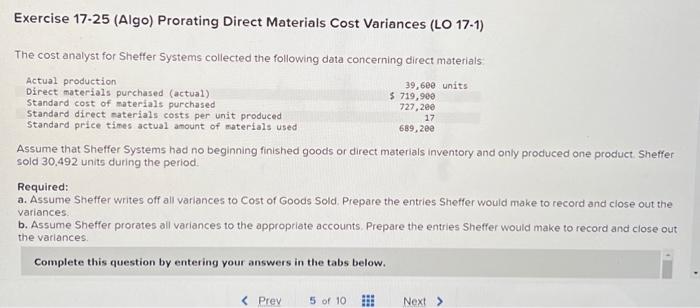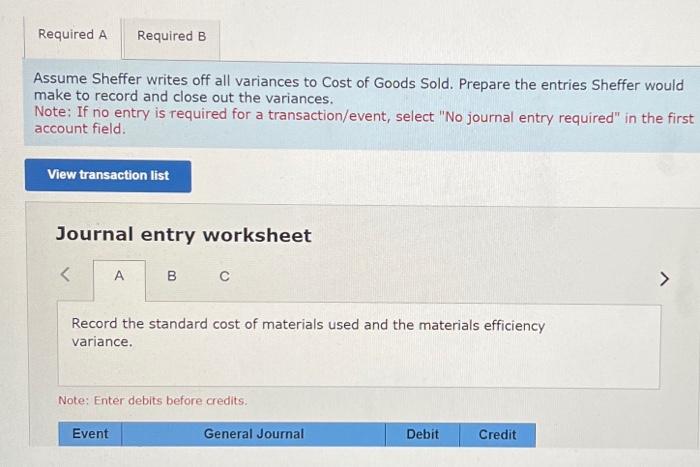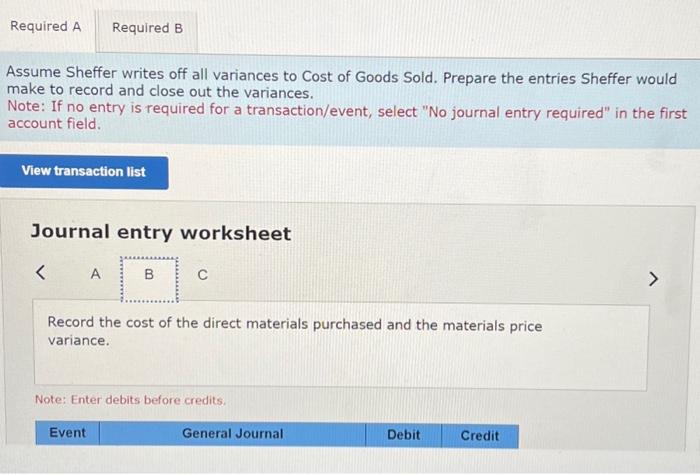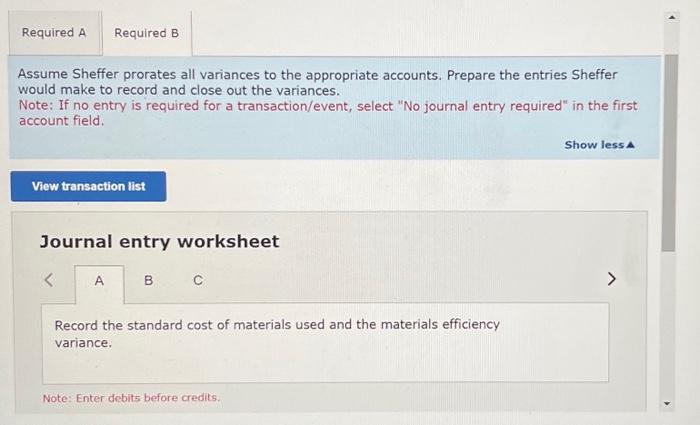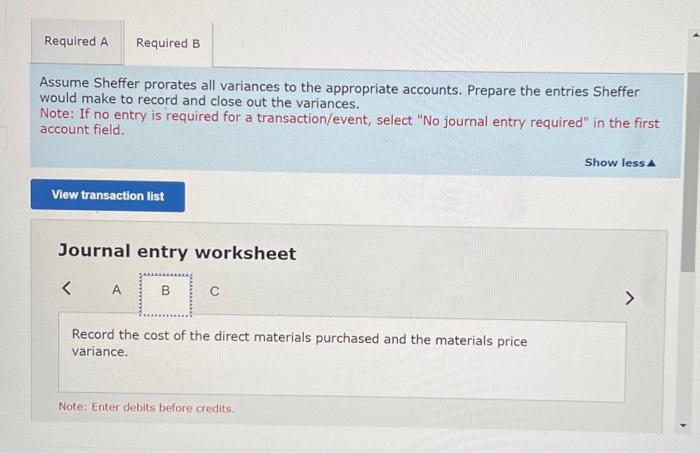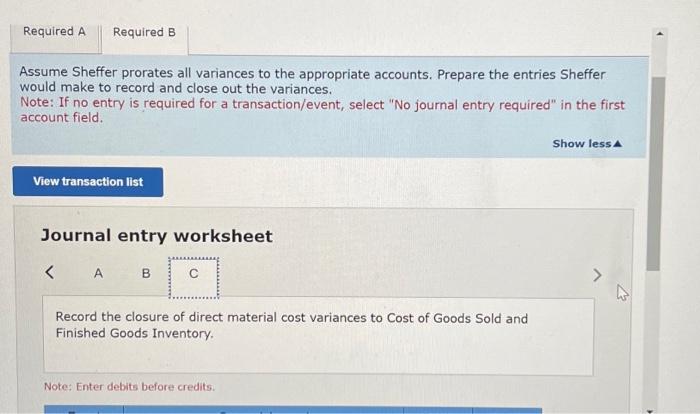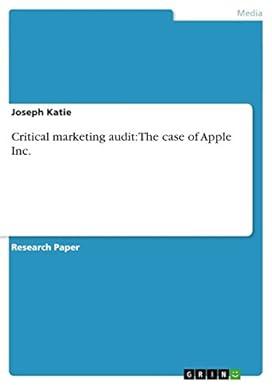Exercise 17-25 (Algo) Prorating Direct Materials Cost Variances (LO 17-1) The cost analyst for Sheffer Systems collected the following data concerning direct materials: Actual production Direct materials purchased (actual) Standard cost of materials purchased Standard direct materials costs per unit produced Standard price times actual amount of materials used 39,600 units $ 719,900 727,200 17 689, 200 Assume that Sheffer Systems had no beginning finished goods or direct materials inventory and only produced one product. Sheffer sold 30,492 units during the period. Required: a. Assume Sheffer writes off all variances to Cost of Goods Sold. Prepare the entries Sheffer would make to record and close out the variances. b. Assume Sheffer prorates all variances to the appropriate accounts. Prepare the entries Sheffer would make to record and close out the variances. Complete this question by entering your answord
Exercise 17-25 (Algo) Prorating Direct Materials Cost Variances (LO 17-1) The cost analyst for Sheffer Systems collected the following data concerning direct materials Assume that Sheffer Systems had no beginning finished goods or direct materials inventory and only produced one product Sheffer sold 30,492 units during the period. Required: a. Assume Sheffer writes off all varlances to Cost of Goods Sold. Prepare the entries Sheffer would make to record and close out the variances. b. Assume Sheffer prorates all variances to the appropriate accounts. Prepare the entries Sheffer would make to record and close out the variances. Complete this question by entering your answers in the tabs below. Assume Sheffer writes off all variances to Cost of Goods Sold. Prepare the entries Sheffer would make to record and close out the variances. Note: If no entry is required for a transaction/event, select "No journal entry required" in the first account field. Journal entry worksheet Record the cost of the direct materials purchased and the materials price variance. Note: Enter debits before credits. Assume Sheffer writes off all variances to Cost of Goods Sold. Prepare the entries Sheffer would make to record and close out the variances. Note: If no entry is required for a transaction/event, select "No journal entry required" in the first account field. Journal entry worksheet Record the closure of direct material cost variances to Cost of Goods Sold. Note: Enter debits before credits. Assume Sheffer writes off all variances to Cost of Goods Sold. Prepare the entries Sheffer would make to record and close out the variances. Note: If no entry is required for a transaction/event, select "No journal entry required" in the first account field. Journal entry worksheet Record the standard cost of materials used and the materials efficiency variance. Note: Enter debits before credits: Assume Sheffer prorates all variances to the appropriate accounts. Prepare the entries Sheffer would make to record and close out the variances. Note: If no entry is required for a transaction/event, select "No journal entry required" in the first account field. Show less A Journal entry worksheet Record the cost of the direct materials purchased and the materials price variance. Note: Enter debits before credits: Assume Sheffer prorates all variances to the appropriate accounts. Prepare the entries Sheffer would make to record and close out the variances. Note: If no entry is required for a transaction/event, select "No journal entry required" in the first account field. Show less A Journal entry worksheet Record the closure of direct material cost variances to Cost of Goods Sold and Finished Goods Inventory. Note: Enter debits before credits. Assume Sheffer prorates all variances to the appropriate accounts. Prepare the entries Sheffer would make to record and close out the variances. Note: If no entry is required for a transaction/event, select "No journal entry required" in the first account field. Show less A Journal entry worksheet B Record the standard cost of materials used and the materials efficiency variance. Note: Enter debits before credits
